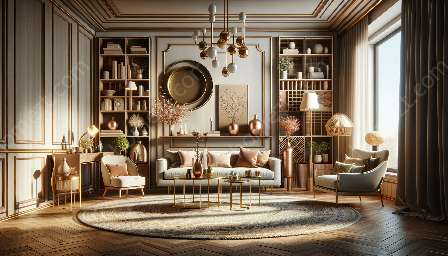The design principles in interior design and home furnishings play a crucial role in creating attractive, functional, and harmonious spaces. These principles guide designers and homeowners in creating environments that are visually appealing and practical. By understanding and effectively applying design principles, individuals can transform their living spaces into areas that reflect their personal style and enhance their quality of life.
Balance
Balance is a fundamental design principle that refers to the distribution of visual weight in a space. Achieving balance in interior design involves arranging elements such as furniture, accessories, and colors in a way that creates a sense of equilibrium. There are three primary types of balance: symmetrical, asymmetrical, and radial.
Symmetrical Balance
Symmetrical balance involves arranging elements in a space so that they are mirrored or evenly distributed around a central point. This type of balance creates a sense of formality and order, commonly found in traditional and classical interior designs.
Asymmetrical Balance
Asymmetrical balance is achieved by using different elements that have equal visual weight to create a sense of balance. This type of balance is often employed in modern and contemporary interior designs, as it provides a more dynamic and informal look.
Radial Balance
Radial balance is characterized by elements radiating out from a central point, commonly seen in circular or spiral patterns. This type of balance creates a sense of movement and energy within a space.
Harmony
Harmony in interior design refers to the cohesion and unity of various elements within a space. Achieving harmony involves creating a sense of visual continuity and a cohesive look. This can be accomplished through the careful selection of colors, patterns, textures, and materials that complement each other and work cohesively to create a harmonious environment.
Rhythm
Rhythm is the principle of design that creates a visual flow and movement within a space. In interior design, rhythm can be achieved through the repetition of visual elements such as colors, shapes, patterns, or textures. This repetition helps to create a sense of continuity and a visual journey throughout the space, leading the eye from one area to another.
Proportion and Scale
Proportion and scale are essential design principles that involve the relationship between various elements in a space. Proportion refers to the relative size and scale of objects within a space, while scale refers to the size of an object in relation to its surroundings. Achieving proper proportion and scale ensures that elements within a space relate to each other in a visually pleasing and functional manner.
Emphasis
Emphasis is a design principle that involves creating a focal point or center of interest within a space. This focal point draws attention and creates a sense of visual importance. By using elements such as color, pattern, or texture, designers can create emphasis and guide the viewer's eye to specific areas within a room.
Unity
Unity is the cohesive force that brings all elements within a space together. It involves the consistent use of design principles and elements to create a sense of oneness and completeness. Achieving unity in interior design and home furnishings ensures that the space feels harmonious and well-integrated.
Conclusion
Understanding and applying design principles is crucial for creating attractive, functional, and well-designed interiors and home furnishings. By incorporating principles such as balance, harmony, rhythm, proportion, emphasis, and unity, individuals can transform their living spaces into visually appealing and cohesive environments. Whether designing a whole room or simply selecting home furnishings, these principles serve as a guide for creating spaces that reflect personal style and enhance the overall quality of life.


